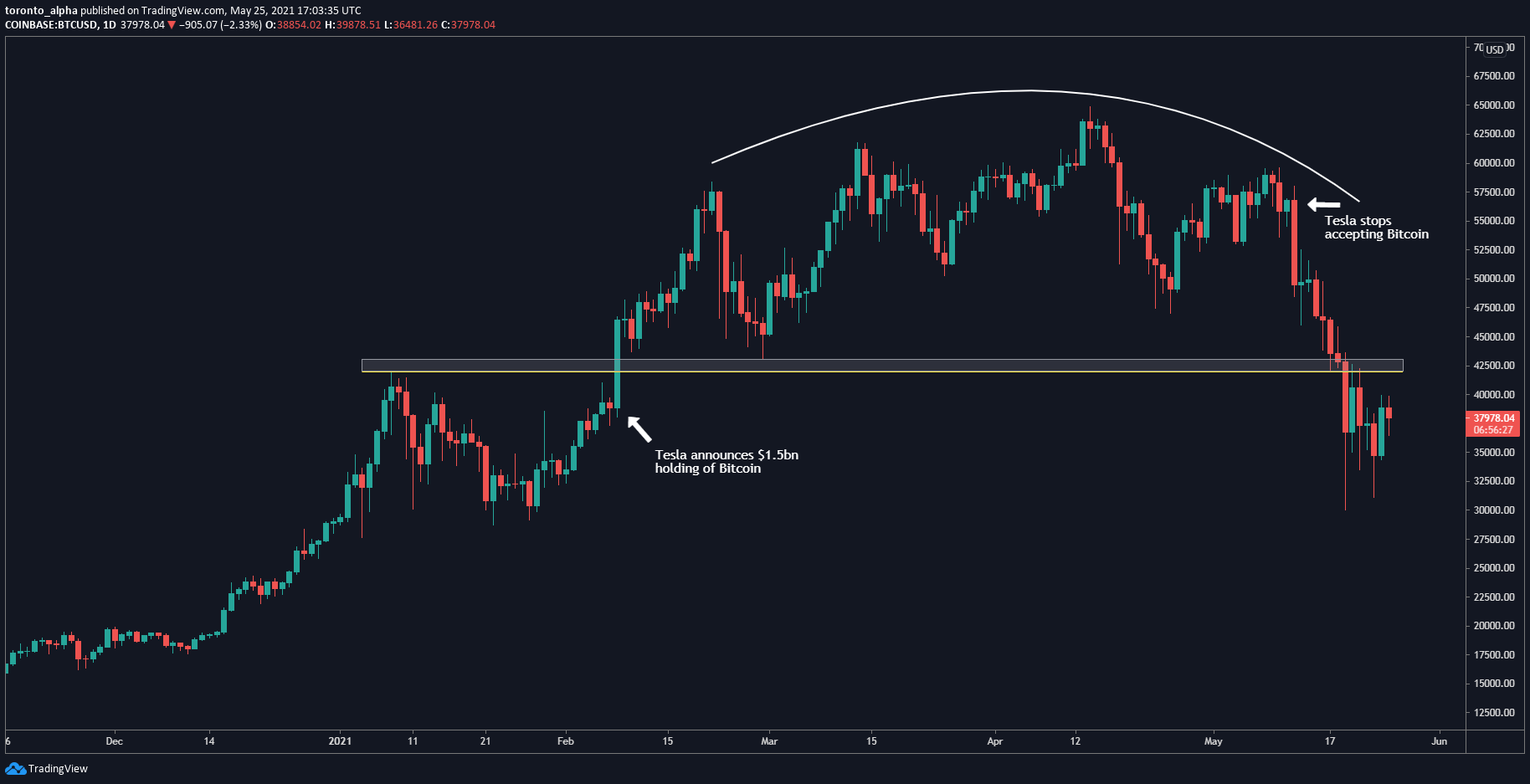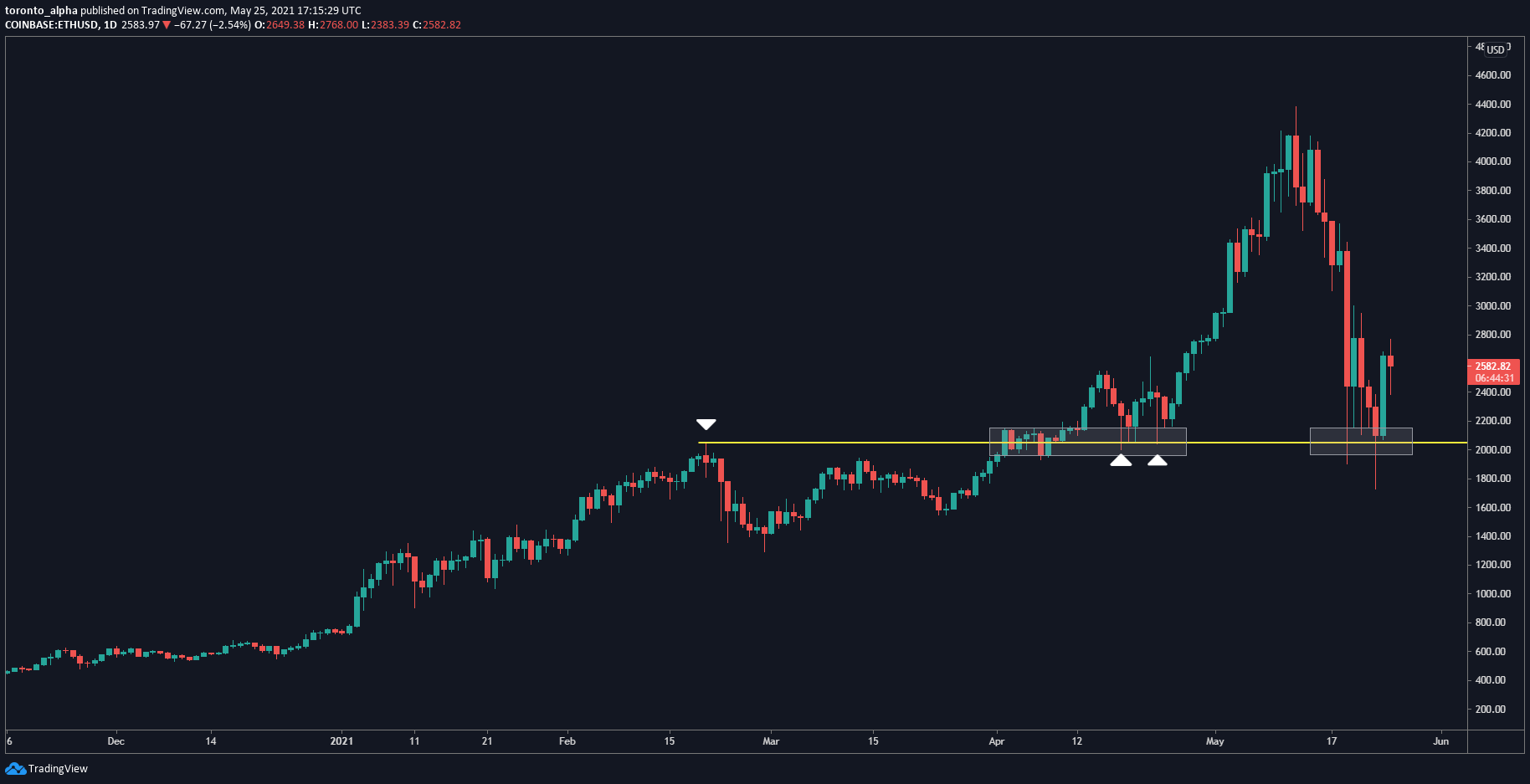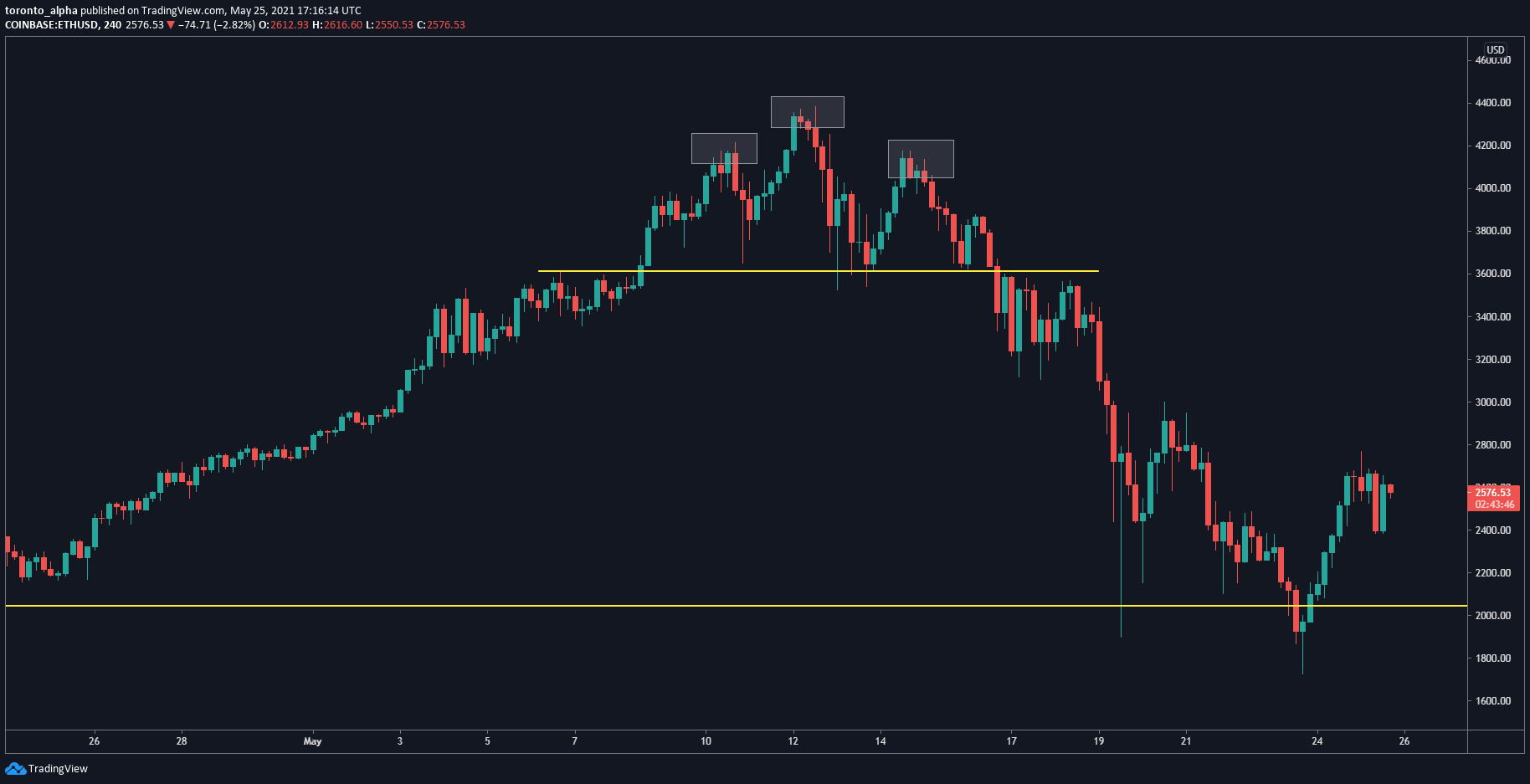Where Do You Start Trading Cryptocurrencies?
One way to trade cryptocurrencies is just like any other asset – by purchasing them outright through a cryptocurrency exchange, such as Coinbase. The advantage of this is that you actually own the underlying asset, so your risk will always be capped when trading that asset. However, the disadvantage is that you can’t go short – which means you can’t profit from the decline of that asset, and you have little to no access to leverage.
Another way to trade an asset such as cryptocurrencies is through futures contracts at regulated exchanges such as the Chicago Mercantile Exchange (CME). Of course, with this approach, you can go long as well as short and there is plenty of leverage. It’s also a centralized exchange, which means it’s a well-regulated environment and the pricing is actual market pricing. However, you would still require a futures broker, who may demand high account minimums.
A third way you can trade cryptocurrencies is through a Forex/CFD broker, which means you can trade long or short, have access to leverage, trade with small account sizes and in a regulated environment. You can also use the MT4 platform which, if you’re a Forex trader, you’re already using.
Each approach has pros and cons, but trading cryptocurrencies through a Forex broker whom you trust is probably the best way to crypto trade. One such broker is eToro, which is well-regulated, highly trusted and offers a competitive environment for trading cryptocurrencies.
One of the ways you can lose money in crypto trading is by trading through a broker who is not properly regulated. The U.S. Securities and Exchange Commission published an article about the regulations surrounding cryptocurrencies, which you can read here.
The cryptocurrency market is relatively new, with volatile cryptos & market conditions and changing regulations and platforms for execution. (That’s why the contents of webinars such as this are subject to rapid change.)
The question, then, is: can you perform the same kind of technical analysis on cryptocurrencies, using the same tools and strategies, as in Forex trading?
An important factor involved in trading any asset is crowd psychology. So when considering whether you can perform technical analyses on any asset class, whether it’s a cryptocurrency or a stock or Forex pair, an essential requirement is a reasonable amount of market participation, where a crowd enables technical patterns to form. You can measure participation through market capitalization, liquidity and volume, and how they show up on the price chart. If you’re looking at chart and wondering if there is decent liquidity, look for gaps. If there are many gaps then it’s a thinly traded asset.
Let’s go through some of the cryptocurrencies that are traded and their approximate market caps:
.png) Keep in mind that there are no economic calendars for cryptos like there are for other assets. Crypto is so new that the industry is still in a bit of a blind spot and is learning to see what moves the crypto markets.
Keep in mind that there are no economic calendars for cryptos like there are for other assets. Crypto is so new that the industry is still in a bit of a blind spot and is learning to see what moves the crypto markets.
When looking at whether you can day trade cryptos, consider the cost of trading. One way to calculate this is to look at the spread plus commissions as a percentage of the average daily range. The lower the percentage, the more cost-efficient it is to trade that asset class.
Here are some examples of that:
.png)
You can see that for the EUR/USD, the spread is under 2% of the daily move, which isn’t bad at all. By comparison, Bitcoin is around 2.5%, which is also a decent spread.
You can easily get the average true range for cryptocurrency in MT4, by going to Insert > Indicator > Average True Range.
Let’s look at some crypto charts to see how we conduct a technical analysis on a given cryptocurrency, starting with the daily chart for Bitcoin:

Bitcoin has clearly had a big runup since November 2020 and has been pulling back more recently. I’ve drawn a key level around the $42,500 mark, which had been resistance but was then touched as support. The price started to make a rounded top, which is a pretty textbook reversal pattern, and then came down to break through the support level.
As you may know, Tesla CEO Musk has had a tremendous effect on crypto markets, in contrast with Forex markets, which are usually only moved by public officials and not individuals. You can see on the chart where Tesla announced it would accept Bitcoin, and the market’s reaction, and you can see where Tesla announced it would not be accepting Bitcoin, and the market’s reaction. Those two candles, in fact, have been the biggest bullish and bearish candles.
I do think it’s worth mentioning that in each case, the price had already begun to show a bullish and bearish bias, respectively; Tesla’s announcement’s simply accelerated the effect.
Now let’s look at the daily chart for Ethereum:

Here I’ve drawn a key level just over the $2,000 mark. In a classic role reversal, this level was initially resistance and then tested as support. While the price did breach it in the last few days, it clearly did not want to close below the level. That tells me there’s a good chance that the level will hold.
Let’s zoom in to the 4-hour chart:

I see here a head and shoulders reversal pattern, where the price broke through the neckline and tested it as resistance. Now you can see on the level below – which we just saw on the daily chart – how the price did not close below it and actually seems to be trending up.
If you want to learn more about cryptocurrencies, visit FXAcademy.com for a 4-part cryptocurrency course.
Final Thoughts:
Treat cryptocurrencies in a similar way to trading other Forex pairs: if it’s a liquid and well-traded crypto, you can perform a technical analysis.
Always mind your risk! Make sure to set proper stop-losses and that your potential targets are better than the risk you’re taking.
